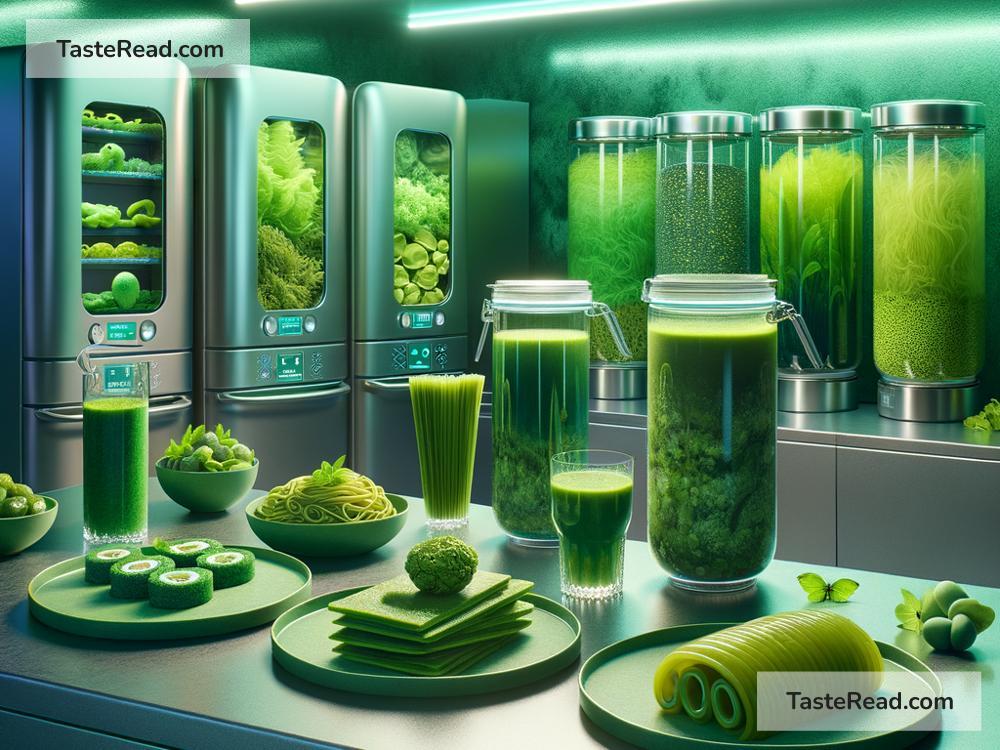The Future of Algae as a Food Source
When you think of algae, chances are you picture green blobs floating in a pond or seaweed swaying in ocean waves. But did you know that algae could be one of the most important food sources for the future? As the world faces challenges like climate change, growing populations, and food shortages, scientists and innovators are exploring the potential of algae to help solve these problems. Let’s take a closer look at why algae might become a major player in feeding the planet.
What is Algae?
Algae are simple plants that grow in water and range from microscopic organisms to large seaweed. Unlike regular plants, algae don’t need soil to grow—they use sunlight, water, and nutrients like nitrogen and phosphorus to thrive. There are thousands of different types of algae, but they are generally categorized into two groups: microalgae (tiny single-celled plants like spirulina and chlorella) and macroalgae (seaweed, like nori or kelp).
Why Algae Could Be the Perfect Food
Algae may not look like much, but it is packed with nutrients, and some types of algae are already being used as food around the world. Here’s why algae could be a game-changer:
1. Nutritional Powerhouse
Algae is incredibly nutritious. Microalgae like spirulina and chlorella contain high amounts of protein, often more than meat or eggs. Algae is also rich in essential vitamins (like B12), minerals (like iron), and omega-3 fatty acids, which are good for your heart, brain, and overall health. Even more exciting, algae is a source of antioxidants, which help prevent damage to your cells.
2. Sustainable to Produce
Growing algae requires fewer resources compared to traditional farming. It doesn’t need fertile land or a lot of water, making it ideal for regions facing water or soil shortages. Algae grows quickly, often doubling in size within a day, and can be cultivated in tanks, ponds, or even vertical farms. Plus, it absorbs carbon dioxide from the air, helping fight climate change!
3. Solving Food Security
With the world’s population estimated to reach nearly 10 billion by 2050, we’ll need more food—and fast. Traditional farming may struggle to keep up with demand. Algae could help fill the gap because it can be grown anywhere with sunlight and water, even in areas where traditional crops don’t grow.
4. Versatile Applications
Algae isn’t just healthy; it’s also incredibly versatile. It can be used in protein powders, snacks, energy bars, and even as an ingredient in pasta or bread. Seaweed, a type of macroalgae, is commonly used in sushi rolls or as a flavoring in soups. Manufacturers can also use algae oil as a substitute for fish oil or vegetable oil.
Challenges to Overcome
Of course, the idea of algae becoming a major food source doesn’t come without challenges. Here are some obstacles experts need to address:
1. Taste and Texture
Let’s be honest: not everyone loves the taste of algae. Microalgae can have a strong, earthy flavor, which can be off-putting to some people. Scientists are working on ways to improve its taste and texture. For example, algae can be blended into products so it is less noticeable.
2. Production Costs
Right now, growing and harvesting algae on a large scale can be expensive. For algae to become a widely available food source, costs need to come down. Advances in farming technology, such as more efficient harvesting methods, could make this happen.
3. Awareness and Acceptance
Many people simply don’t know much about algae as a food source. It will take time for consumers to get used to the idea and incorporate it into their diets. Public awareness campaigns and education will play a big role in encouraging people to try algae-based foods.
Innovations in Algae Food Products
Despite these challenges, exciting innovations are already happening in the algae food sector. Companies are developing algae-based protein powders, meat substitutes, and even ice creams! In parts of Asia, seaweed is already a staple in meals, and its popularity is spreading globally. Fast-food chains are experimenting with algae as an ingredient, and chefs are finding creative ways to make algae delicious.
Beyond food, algae has potential in other industries. For example, algae can be used to create biofuels, biodegradable plastics, and even skincare products. These uses could make algae farming even more profitable and sustainable.
The Path Forward
As researchers keep unlocking algae’s potential, governments and businesses will need to invest in production technologies and create policies that support algae farming. Education and public outreach are also critical to teaching people about the benefits of algae as food.
It’s clear that algae offers solutions to some of the biggest challenges we face today: feeding a growing population, protecting the planet, and improving health. While it may take time for algae to become a common food around the world, it’s clear that its future looks bright.
Conclusion
Algae might seem like an unlikely hero, but its potential is enormous. Nutritional, sustainable, and versatile—it could transform the way we eat and help build a better future for everyone. So, the next time you see green seaweed on your plate or hear about spirulina powder, remember: this humble plant could play a big role in feeding the world.


